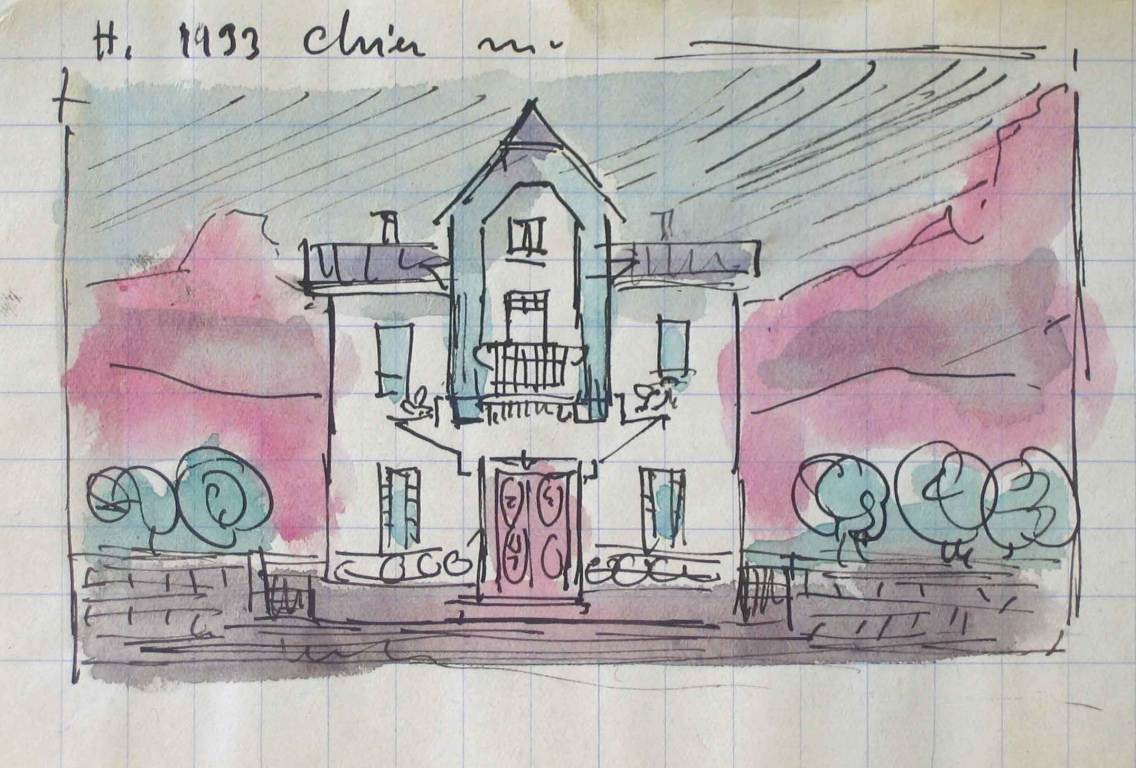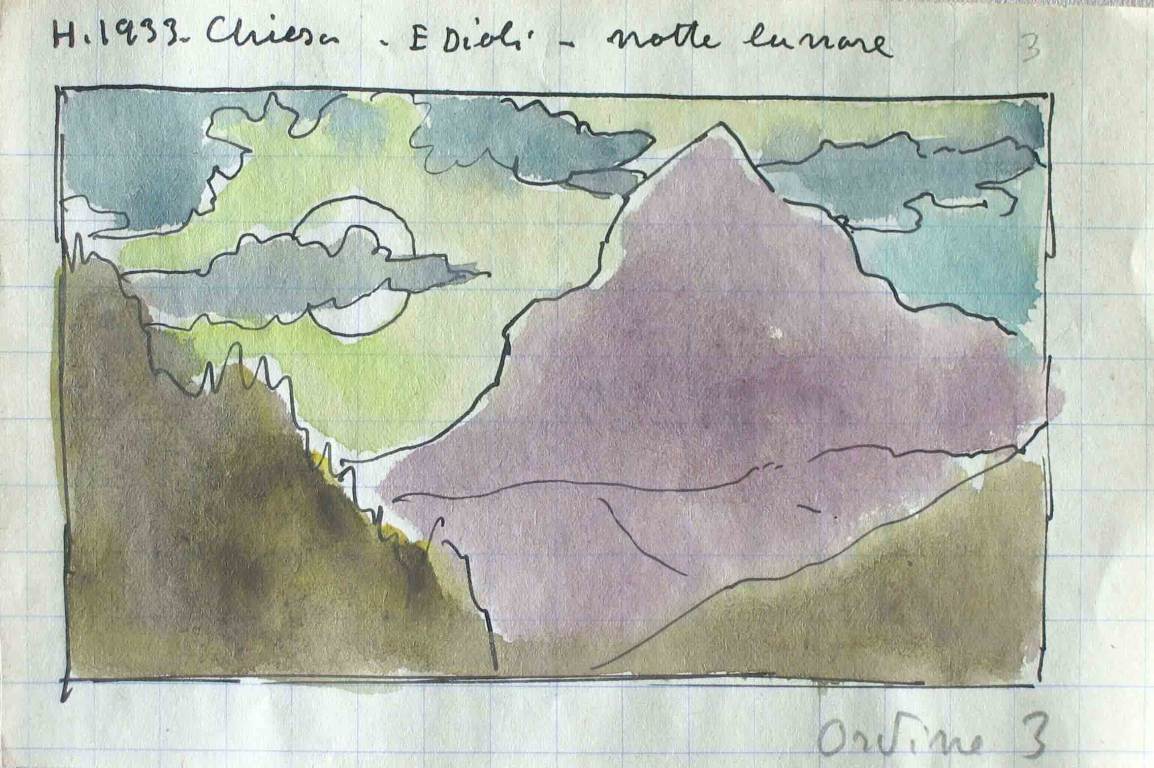 Sketch of Villa Liberty.
Sketch of Villa Liberty.
Dioli invented two architectural styles and some original decorations for the Valmalenco, the
Ridgeo and the Monglunder.
The term “Ridgeo” probably comes from a combination of the words “retta” or “riga” [line] and “geometria” [geometry] and indicates a type of composition featuring rigidly structured shapes between precise, geometric grids.
Dioli probably invented this new language by looking not only at styles with straight lines from ancient cultures, but also at the new styles introduced in 1925 by Art Deco. The latter were concerned mainly with the field of applied arts, where we can see an angular trend of lines drawn within square, abstract and symmetrical compositions.
The rhombus, a sort of diamond or shield which frequently appears as a decorative element in furnishings, on outside doors, fireplaces and in the railings designed by the maestro, plays a major role in the Ridgeo style.
But not only that.
Dioli osserved and recorded the shapes of nature, such as the complex, symmetrical shapes of an ice crystal and of a courgette, and assimilated them into his definition of this style.
Thus, the Ridgeo appears to be a free interpretation of a certain development in the history of art, mixed with an intentional stylisation of elements and shapes found in nature: the widely used triangle could represent or symbolise the pointed profile of the mountains and conifers, and the spiral would indicate the curl of the vines and the leaves of certain flowers on the upper slopes.
 Sketch of Pizzo Scalino.
Sketch of Pizzo Scalino.
He dedicated the years from 1933 to 1938 in particular to perfecting a new style, named “Monglunder malenchino”, which for him meant “what I can see from my mountains”.
This language originated from the assimilation of the Baroque and Rococco styles, which the artist simplified until he was able to trace their elementary spirals, which he used to decorate many furnishings and wood carvings.
Like the Ridgeo, the Monglunder also began with an unusual observation of the shape of flowers, trees and fruits, which were no longer rigid, architectural textures, but rather vividly rounded, soft and at times irregular images: his observation of the metamorphosis of a leaf from the original seed to the fully-developed leaf, from the elementary shape of a circle (or egg) to the symmetry and asymmetry of a complex surface, in which rounded forms play and alternate with each other.